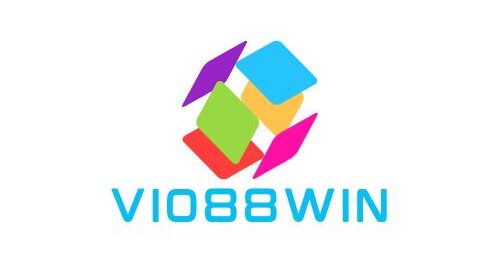Every business generates data, but only the smartest companies know how to transform that information into actionable insights. Business analytics has emerged as the bridge between raw data and strategic decision-making, helping organizations across industries improve performance, reduce costs, and gain competitive advantages.
This comprehensive guide will walk you through everything you need to know about business analytics, from fundamental concepts to implementation strategies. By the end, you’ll understand how to harness the power of data to drive meaningful business outcomes.
What are Business Analytics?
Business analytics refers to the systematic exploration of an organization’s data to gain insights that inform strategic decisions. It combines statistical analysis, data mining, predictive modeling, and other quantitative methods to help businesses understand past performance, current trends, and future opportunities.
Unlike traditional reporting that simply tells you what happened, business analytics explains why it happened and what’s likely to happen next. This forward-looking approach enables companies to move from reactive to proactive decision-making.
The field encompasses three main types of analysis:
Descriptive analytics examines historical data to understand what has already occurred. This includes basic reporting, dashboards, and key performance indicators (KPIs) that provide a snapshot of business performance.
Predictive analytics uses statistical models and machine learning algorithms to forecast future outcomes based on historical patterns. Companies use this to anticipate customer behavior, market trends, and potential risks.
Prescriptive analytics goes one step further by recommending specific actions based on analytical insights. This advanced approach helps organizations optimize resources and make data-backed decisions about complex scenarios.
Why Business Analytics Matters More Than Ever
The digital transformation has fundamentally changed how businesses operate and compete. Companies now have access to unprecedented amounts of data from customer interactions, social media, IoT devices, and operational system. However, data alone doesn’t create value—the ability to extract meaningful insights does.
Organizations that embrace business analytics report significant improvements across key metrics. They make faster decisions, identify new revenue opportunities, and respond more effectively to market changes. Analytics-driven companies are also better positioned to understand customer needs, optimize operations, and mitigate risks before they become costly problems.
The competitive landscape has intensified this need for analytical capabilities. Businesses that rely solely on intuition or experience-based decision-making often find themselves at a disadvantage against data-savvy competitors who can spot trends earlier and respond more strategically.
Core Components of Business Analytics
Data Collection and Management
Effective business analytics starts with robust data collection processes. Organizations must identify relevant data sources, which typically include customer relationship management (CRM) systems, enterprise resource planning (ERP) platforms, website analytics, social media metrics, and external market data.
Data quality plays a crucial role in analytical success. Poor data quality leads to inaccurate insights and misguided decisions. Companies need established procedures for data cleaning, validation, and standardization to ensure analytical models produce reliable results.
Statistical Analysis and Modeling
Statistical analysis forms the foundation of business analytics. This includes correlation analysis to identify relationships between variables, regression analysis to understand cause-and-effect relationships, and hypothesis testing to validate assumptions about business performance.
Advanced modeling techniques such as machine learning algorithms, neural networks, and artificial intelligence are becoming increasingly important for handling complex datasets and identifying subtle patterns that traditional methods might miss.
Data Visualization and Reporting
Even the most sophisticated analysis is worthless if stakeholders can’t understand or act on the insights. Data visualization tools transform complex analytical results into clear, actionable presentations through charts, graphs, dashboards, and interactive reports.
Effective visualization considers the audience’s analytical sophistication and decision-making needs. Executive dashboards focus on high-level KPIs and trends, while operational reports provide detailed metrics for day-to-day management.
Types of Business Analytics Applications
Customer Analytics
Customer analytics helps businesses understand buyer behavior, preferences, and lifetime value. Companies use this information to segment customers, personalize marketing campaigns, and improve customer retention rates.
Common applications include churn prediction models that identify customers likely to stop buying, recommendation engines that suggest relevant products, and customer journey analytics that optimize the buying experience across multiple touchpoints.
Financial Analytics
Financial analytics applies analytical techniques to accounting data, budgets, and financial forecasts. This helps organizations improve profitability, manage cash flow, and make better investment decisions.
Examples include variance analysis to understand budget performance, profitability analysis by product or customer segment, and risk assessment models for credit decisions or investment evaluations.
Operational Analytics
Operational analytics focuses on improving business processes and resource utilization. This includes supply chain optimization, inventory management, and workforce analytics that help companies operate more efficiently.
Manufacturing companies use operational analytics to reduce waste, improve quality control, and optimize production schedules. Service businesses apply similar techniques to staffing optimization and service delivery improvements.
Marketing Analytics
Marketing analytics measures and improves marketing campaign performance across all channels. This includes attribution modeling to understand which marketing activities drive results, A/B testing to optimize messaging and creative elements, and ROI analysis for marketing investments.
Digital marketing has expanded analytical possibilities significantly. Companies can now track customer interactions across websites, social media, email campaigns, and mobile apps to create comprehensive pictures of marketing effectiveness.
Getting Started with Business Analytics
Assess Your Current Capabilities
Before implementing new analytical initiatives, evaluate your organization’s existing data infrastructure, analytical skills, and technology resources. This assessment helps identify gaps and prioritize areas for improvement.
Consider factors such as data availability and quality, current reporting processes, staff analytical capabilities, and technology limitations that might constrain analytical projects.
Define Clear Objectives
Successful analytics projects start with well-defined business objectives. Rather than collecting data for its own sake, focus on specific questions you want to answer or decisions you need to support.
Examples of clear analytical objectives include reducing customer churn by 15%, improving inventory turnover rates, optimizing marketing spend allocation, or identifying the most profitable customer segments.
Start Small and Scale Up
Many organizations make the mistake of attempting comprehensive analytical transformations too quickly. A more effective approach involves starting with pilot projects that address specific business challenges and demonstrate analytical value.
Choose initial projects with clear success metrics, available data, and engaged stakeholders. Early wins build organizational confidence and support for expanded analytical initiatives.
Invest in the Right Tools and Talent
Business analytics requires both technological infrastructure and human expertise. Popular analytics platforms include Tableau, Power BI, SAS, R, and Python, each with different strengths for various analytical applications.
Equally important is developing analytical capabilities within your team. This might involve training existing employees, hiring data analysts or data scientists, or partnering with external analytics consultants for specialized projects.
Common Challenges and How to Overcome Them
Data Quality Issues
Poor data quality represents one of the biggest obstacles to successful business analytics. Common problems include incomplete records, inconsistent formatting, duplicate entries, and outdated information.
Address these challenges by implementing data governance policies, establishing data quality metrics, and creating regular data cleaning procedures. Automated data validation tools can help identify and correct quality issues before they affect analytical results.
Organizational Resistance
Analytical initiatives often face resistance from employees who are comfortable with existing decision-making processes. Some stakeholders may distrust data-driven insights or feel threatened by new analytical approaches.
Overcome resistance through education, involvement, and demonstrating quick wins. Show how analytics supports rather than replaces human judgment and involve skeptical stakeholders in analytical project planning and implementation.
Integration Complexity
Many organizations struggle to integrate data from multiple systems and sources. Legacy systems, incompatible data formats, and siloed information create technical challenges for comprehensive analytics.
Address integration issues through careful planning, phased implementation approaches, and potentially investing in data integration platforms or middleware solutions that can connect disparate systems.
The Future of Business Analytics
Business analytics continues to evolve rapidly with advances in artificial intelligence, machine learning, and cloud computing. Real-time analytics capabilities allow organizations to make decisions based on current rather than historical data.
Automated analytics tools are making sophisticated analytical techniques accessible to non-technical users. Self-service analytics platforms enable business users to explore data and generate insights without requiring specialized technical skills.
The integration of analytics with operational systems is creating more responsive business processes. Companies can now automatically adjust pricing, inventory levels, or marketing campaigns based on real-time analytical insights.
Transform Your Business with Analytics
Business analytics represents one of the most powerful tools available for modern organizations seeking to improve performance and gain competitive advantages. The combination of abundant data, sophisticated analytical tools, and cloud computing infrastructure has made advanced analytics accessible to businesses of all sizes.
Success requires more than just technology—it demands a commitment to data-driven decision-making, investment in analytical capabilities, and organizational change management. Companies that successfully implement business analytics create sustainable competitive advantages through better decisions, improved efficiency, and deeper customer understanding.
Start your analytical journey by identifying specific business challenges where data-driven insights could make a meaningful difference. Focus on building foundational capabilities while demonstrating value through targeted projects. With the right approach, business analytics can transform how your organization operates and competes in an increasingly data-driven marketplace.










